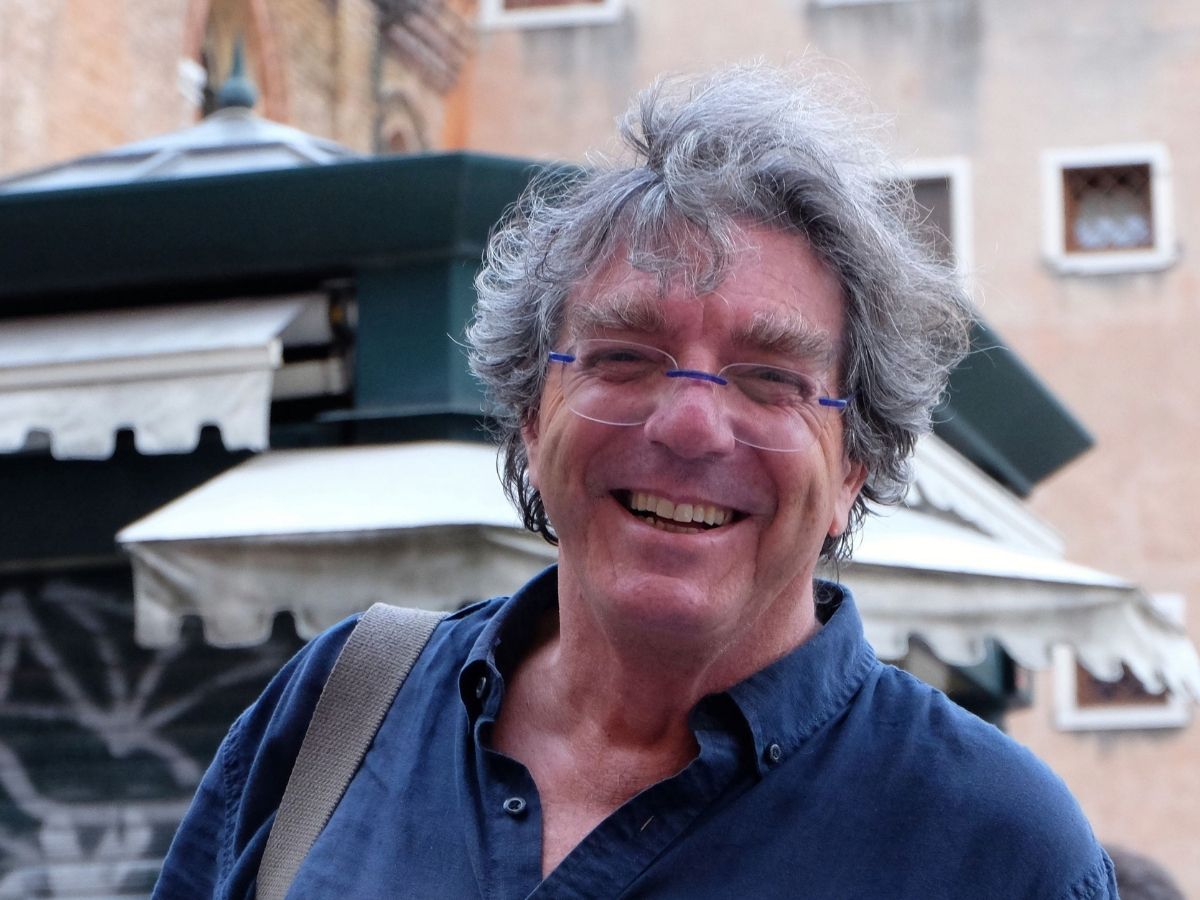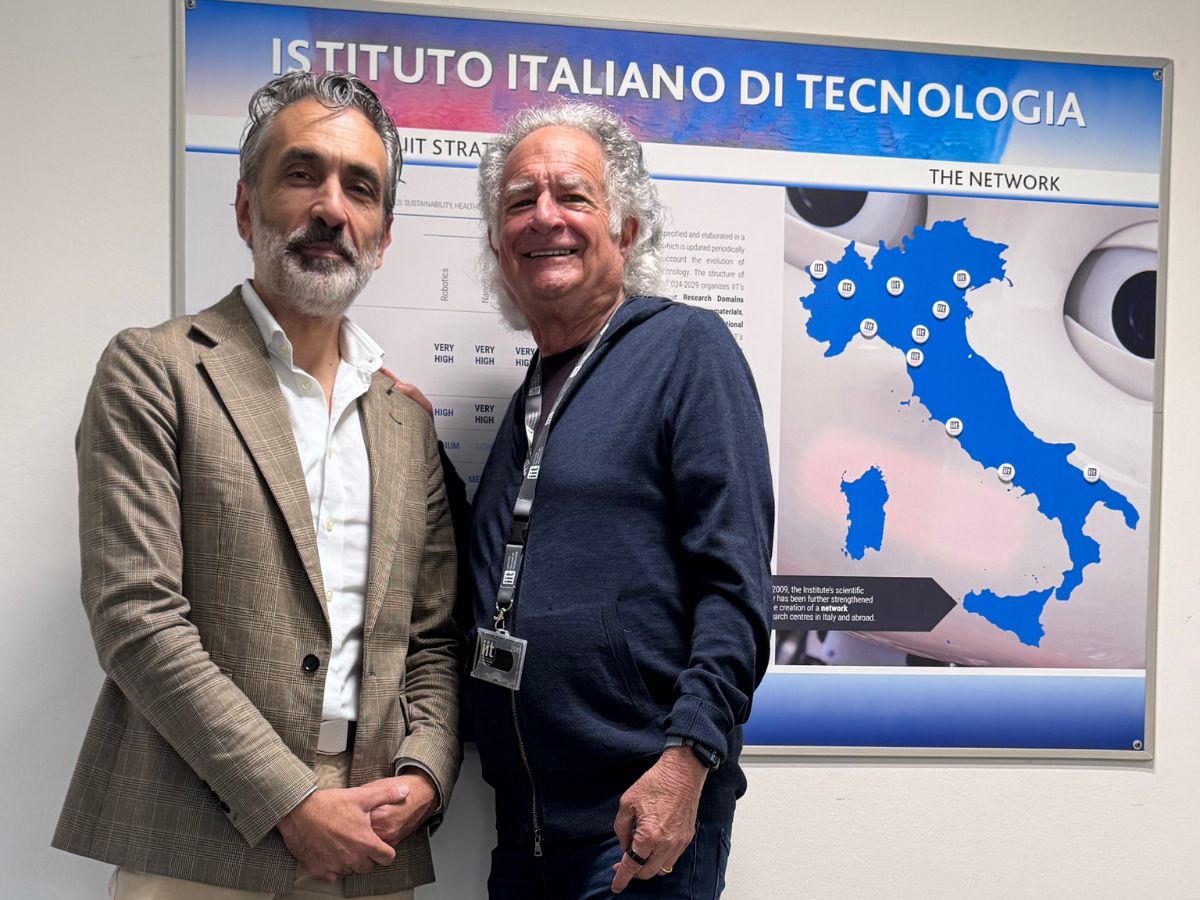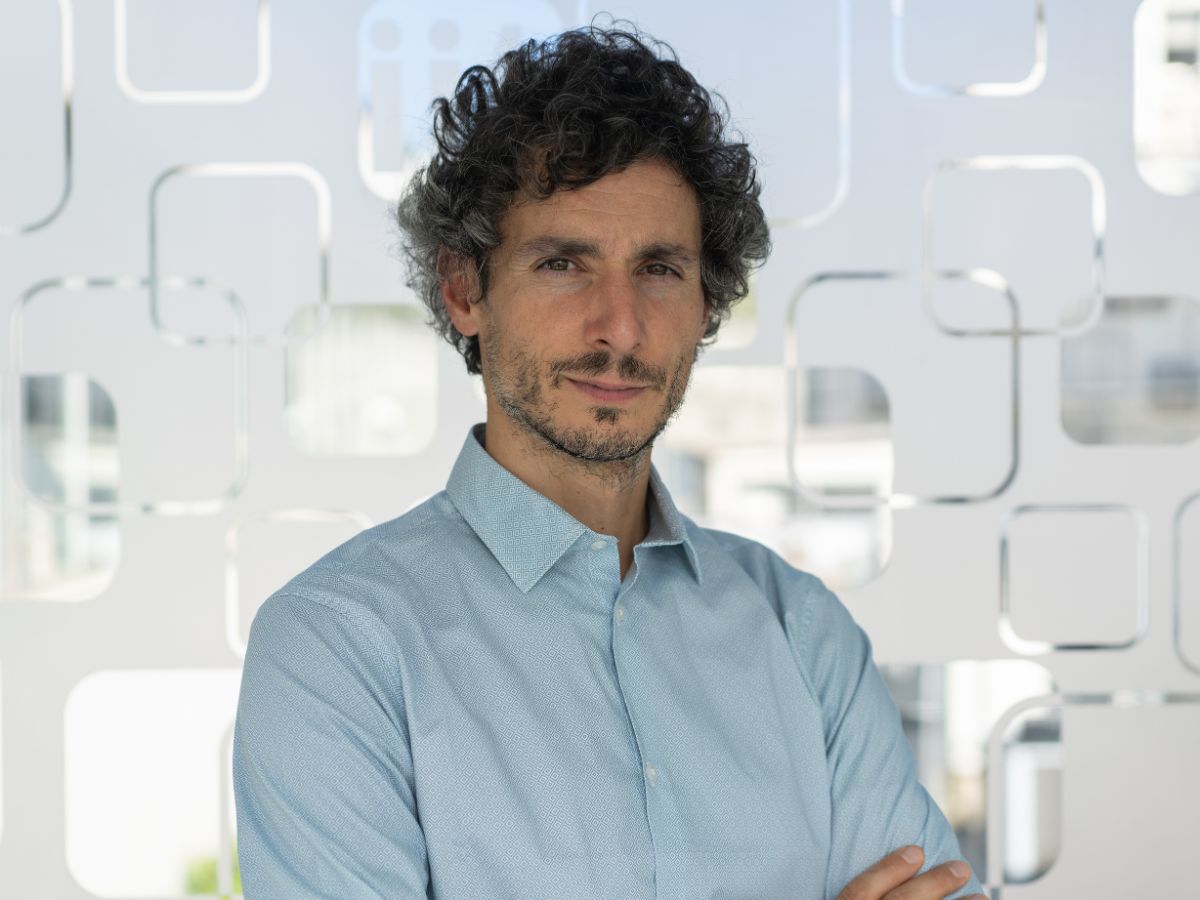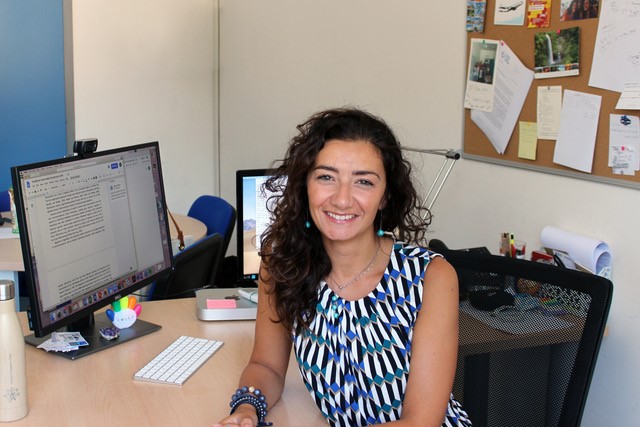Alberto Diaspro receives the Gregorio Weber Award
Alberto, congratulations on this prestigious international award. In this interview, which you dedicate to Teresa, Claudia and Irene, can you mention the studies of the scientist Gregorio Weber after whom the prize is named?
Gregorio Weber, porteño, pioneered developments in the theory and application of fluorescence techniques in biology and biochemistry. He marked the beginning of fluorescence spectroscopy of biological molecules. He was tireless in developing new instrumental solutions. He taught generations of scholars how to use every small or large variation of the fluorescence signal, in all its measurable parameters, to study all matter. It is a great honour for me to receive this award, which I share with all those researchers with whom I have had the good fortune to spend forty years dedicated to scientific research. A research that Roberto Cingolani believed in and bet on over 10 years ago, brought to IIT thanks to Fabio Benfenati and Giulio Sandini in what we can define as the “early days” of IIT.
The prize is awarded to you by the “Biological Fluorescence” working group of the Biophysical Society, sponsored by the ISS, for your studies on fluorescence theories and applications, can you tell us, as much as possible, about this work of yours?
Fluorescence, the one that is present in the pigment of the blue of the Virgin’s mantle, making it stand out more than other colours when you raise your eyes to the sky in the Sistine Chapel, is an instantaneous luminescent phenomenon that allows us to highlight, thanks to the high biochemical affinity of fluorescent molecules both intrinsic and not, specific structures of living cells from DNA to proteins. It is an incredible colour to put on the tip of the microscopist’s brush to study the mechanisms of oncological or neurodegenerative diseases. As an image-forming microscopist, I find myself in the extremely favourable situation of having a bright signal against a black background, even if it is often plagued by noise due to a certain background brightness. A bit like observing the starry sky on a summer night sometimes disturbed by city lights or a passing car. Here are the microscopes that I have designed and built over the years, from those that allowed three-dimensional computational reconstruction to the first two-photon ones up to the developments of super-resolution including the methods that led to the start-up Genoa Instruments, have used fluorescence to create those pointillist paintings that tell us, in space and time, like Claude Monet’s Cathedrals of Rouen, whether things are going well or badly in the living world by showing the way to do. Gregory Weber made the leap to fluorescence by making it modern just as Galilei with Sidereus Nuncius turned science into modern science by observing, interpreting and communicating. On the other hand, for his absolute masterpiece, Galilei improved the telescope and from there built the ‘goggle to see tiny things’ that became the microscope.
What are the main industrial applications of fluorescence?
Fluorescence can be targeted at industrial applications, for example, related to the polymerisation of materials or the realisation of biosensors. I confess to being more interested in fundamental research aspects. In addition to bioimaging, quantum optical microscopy is particularly interesting. Many years ago, I benefited from an important processing insight of Nobel laureate Maria Goeppert-Mayer during her PhD in the 1920s: two-photon fluorescence excitation. Today, thanks to the advent of sensors capable of detecting single photons, offering spatially and temporally confined data on a very small scale, the Feynman scale, one can enter the terrain of quantum microscopy with the optical microscope, where the correlation between the signals collected reveals hidden details that carry key information in the delicate interaction between light and matter. A few years ago, I thought this might be an interesting terrain to try my hand at fluorescence as well. The sensors, SPADs (single-photon avalanche diodes), that we use originated in the laboratories of Sir John Sealy Edward Townsend, professor of physics at Oxford University, to whom we owe the ‘electron avalanche’ phenomenon known as the Townsend discharge. Developments in solid-state semiconductor technology matured in the laboratories of Shockley, Bardeen and Brattain, who were awarded the Nobel Prize for ‘their research on semiconductors and the discovery of the transistor effect’. In these developments, the industrial impact was certainly high, and even more so the impact given to the conduct of those basic and fundamental researches that often, somewhat out of the blue, make a quantum leap to the applications of scientific research in society.
In which direction are your studies in this field heading and which will have the greatest innovative impact?
My studies, on the one hand, aim to explore the wealth of possibilities for understanding light-matter interactions that quantum developments can offer and the realisation of a ‘totipotent’ microscope, i.e. one capable of containing all the methods we have mastered including label-free methods, with the ambition of producing never-before-seen or imagined bio-images of the living, explaining its functioning and revealing the mechanisms by which those two metres of DNA contained in a few millionths of a metre of our cells determine the quality and duration of our lives. Remember the promise I made to my beautiful grandmother? I will find out why, so that you will never die again. The ambitious project of the future is called MOMIX (multimodal optical microscopy image correlation sensing) and adds a determined component to modern optical microscopy: the development of original artificial intelligence algorithms to structure and make full use of the enormous amount of data we are able to produce and have at our disposal. The areas of greatest innovative impact are developments in image scanning microscopy, quantum microscopy, integration with label-free mechanisms and original artificial intelligence algorithms. The challenge is to build images of the living that are free from representing reality as we imagine it in order to really discover new things. IIT’s multi-disciplinary and visionary environment is perfect for these developments, but it must be nurtured like the ‘rose’ in ‘The Little Prince’.
Allow me, finally, counting on your passion and film culture to ask you after watching Don’t Look Up how you see through your lens(!) the relationship between science, communication and politics.
Don’t Look Up is a topical and excellent film not only because of the outstanding performances of Maryl Streep, Leonardo Di Caprio, Cate Blanchett and Jennifer Lawrence, who were fantastic from ‘Frosty Winter’ to the performance of Katniss Everdeen, the Girl on Fire from The Hunger Games. Don’t Look Up recalls the modern fragility of the mechanisms for communicating scientific discovery and the responsibility of a policy that unfortunately, as we have seen in the case of COVID-19, does not understand the impact of science communication or, in the worst cases, does so with purely electoral motives. The film written and directed by Adam McKay, who has already won an Oscar for ‘The Big Bet’, brilliantly tackles the subject and can only take me back to Galilei’s Sidereus Nuncius. That triad ‘observe, interpret, communicate’ was Galilei’s dangerous idea, Peter Greco had fully addressed the subject. The ‘dangerous’ idea lies in trying to explain directly to people what you discover, without the filter of advertisements or ratings, without political or religious propaganda interests. Don’t Look Up lays all this bare, and I feel I can say that the antidote to the distorted use of scientific communication lies in the conquest of a basic knowledge, without discounting the effort and time it takes, which allows one to build the future instead of suffering it.
MOMIX is a registered European word mark, No. 018401321, by IIT.





